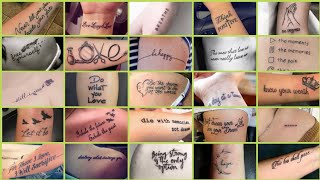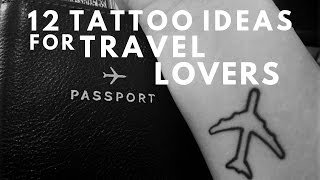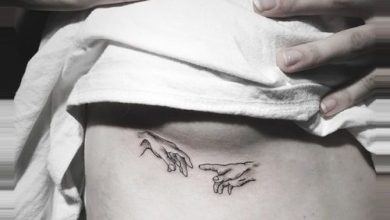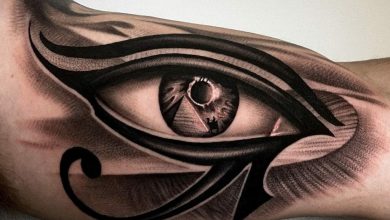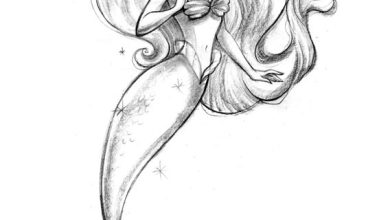Polynesian Tattoo: History, Meanings and Traditional Designs
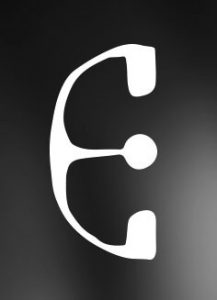
source: the polynesian tattoo manual
the origins of Polynesian society
There is still debate about the ultimate origins of Polynesian culture and that carries over to the notion of tattooing as well.
One thing that is certain is that the term Polynesian or Polynesian incorporates many tribes, including the Marquesans, Samoans, Niueans, Tongans, Cook Islanders, Hawaiians, Tahitians, and Maori. all of these tribes are genetically linked to the indigenous peoples of parts of Southeast Asia.
Southeast Asia and, in turn, Polynesia are subregions of Oceania, which comprise a large grouping of more than 1,000 islands scattered throughout the central and southern Pacific Ocean, within a triangle that encompasses New Zealand, Hawaii and Easter Island in its corners. .
The people who inhabit the islands of Polynesia are called Polynesians and they share many similar traits, such as language, culture, and beliefs.
However, Polynesian languages can actually vary slightly from one another, and in some cases differ significantly. there are some words, which are basically the same in all Polynesian languages, reflecting the deepest core of all Polynesian cultures. moana (ocean) and mana (spiritual force and energy) are two terms that transcend all Polynesian cultures.
These words are quite similar and this reflects how closely Polynesian cultures are related to the ocean, as they believe that the ocean guarantees life.
the origins of tattoo art in polynesia
Historically, there was no writing in Polynesian culture, so Polynesians used tattoo art that was full of distinctive signs to express their identity and personality. tattoos would indicate status in a hierarchical society, as well as sexual maturity, genealogy, and rank within society. Almost everyone in ancient Polynesian society was tattooed.
The first Polynesian islands visited were the Marquesas Islands, which were found by European explorers and the Spanish navigator, Alvaro de Mendana de Neira, in 1595. However, European navigators showed little interest due to a lack of valuable resources.
captain james cook (as mentioned in our complete guide to maori tattoos) was the first navigator to attempt to explore the aforementioned polynesian triangle.
In 1771, when James Cook first returned to Tahiti and New Zealand from his maiden voyage, the word “tattoo” appeared in Europe. he narrated the behaviors of the Polynesians on his journey, which he called tattaw. he also brought a tahitian named ma’i to europe and since then the tattoo began to become rapidly famous, mainly for the ma’i tattoos.
Another legend is that European sailors liked Polynesian tattoos so much that they spread extremely quickly in Europe because the sailors stamped the tattoos on their own bodies.
The current tradition of Polynesian tattooing existed more than 2000 years ago, however, in the 18th century, the old testament strictly prohibited the operation. Since its revival in the 1980s, many lost arts have been revived, but it became very difficult to sterilize the wood and bone tools used for the tattooing process, which is why the Ministry of Health banned tattooing in French Polynesia. in 1986.
The revival of the art and practice of tattooing, particularly in Tonga, in recent years is predominantly mentioned as a result of the work of academics, researchers, visual artists and tattoo artists.
tonga and samoa
It was in Tonga and Samoa that Polynesian tattooing became a highly refined art. Tongan warriors were tattooed from the waist to the knees in a series of geometric patterns, mostly consisting of repeating triangular motifs, bands, and also areas of solid black.
priests who had undergone a long period of training who strictly followed the prescribed rituals and taboos that took place during the tattooing process. For the people of Tonga, the tattoo had a deep social and cultural significance, as mentioned above.
in ancient samoa, tattoos also played a very important role in both religious rituals and wars. the tattooist occupied a hereditary position and therefore very privileged. he would typically tattoo groups of six to eight (usually men) during a ceremony attended by friends and family. the Samoan warrior tattoo began at the waist and extended to just below the knee.
However, it was not uncommon for Samoan women to also get tattoos. but the images were limited to things like a series of delicate (usually geometric) flower-like patterns, on the hands and lower parts of the body.
around 200ad voyageurs from samoa and tonga settled in the marquesas area. Over a period of more than 1,000 years, one of the most complex Polynesian cultures evolved: the Marquesan.
Marquisan art
Marquesan art and architecture were highly developed, and Marquesan tattoo designs, often covering the entire body, were the most elaborate in Polynesia.
tools of the trade
Although many years have passed, the tools and techniques of Polynesian tattooing have changed very little. For a very traditional design, the skill of tattoo art was usually passed down from generation to generation. each tattoo artist, or tufaga, was said to have learned the craft over many years of service as an apprentice.
The advent of Christianity in Tonga witnessed the loss of various indigenous practices, such as the practice of tattooing. Although the art of tattooing remained in the nation of Samoa, it was completely erased in Tonga.
In Samoa, the tradition of applying tattoos by hand has been unbroken for over 2,000 years. tools and techniques have hardly differed at all. the skill is often passed down from father to son, each artist learning the art after many years of service as an apprentice.
A young artist in training would often spend hours at a time, or even days, striking designs into sand or bark cloth using a special tattoo or au comb. In honor of their revered tradition, Samoan tattooists crafted this tool from sharp boar teeth joined with a piece of tortoise shell and a wooden handle.
pain
Permanent marks left on someone after tattooing will forever remember and commemorate their resilience and dedication to cultural traditions. the pain was extreme and the risk of death from infection was a major concern for many people. however, to avoid getting tattooed was to risk being labeled a coward or pala’ai and then being hated and insulted by the rest of the tribe or clan. men who couldn’t bear the pain and abandoned their tattoos were left incomplete, carrying their mark of shame throughout their lives.
There were few men who rejected the traditional pe’a, the intricate tattoo that covered his body from mid-torso to knees. the artist would use a mallet to tap the teeth of the ink-laden comb into the man’s flesh, following only simple markings as a guide.
A tattoo session would typically last until nightfall or until men could no longer bear the pain and would resume the next day, unless the inflamed skin needed a few days to heal. the whole process could take up to three or even four months. Later, the man’s family would help him celebrate, despite the pain, by organizing a party and the tufuga broke a pot of water at his feet, marking the end of the painful ordeal.
the healing process
This process used to take months. the tattooed skin would have to be washed with salt water, to keep infection at bay and then the body area would have to be massaged to keep out impurities. family and friends would help in the healing process because even extremely simple tasks e.g. walking and sitting could irritate the inflamed skin and cause great pain. Within six months, the distinctive designs would begin to appear on her skin, but it would take nearly a year for it to fully heal.
placement on the body
Placement on the body plays a very important role in Polynesian tattoos. there are some items that are associated with specific meanings based on where they are placed. In short, its location influences the meaning of a Polynesian tattoo.
Humans are said to be descendants or children of rangi (heaven) and papa (earth), who are said to have once been united. man’s quest in polynesian legend is to find that union again, so the body is seen as a link between rangi and papa. the upper part of the body relates to the spirit world and the sky, while the lower part of the body relates to the world and the earth.
The locations of some elements on the body, such as the genealogical prints on the back of the arms, suggest that the back may be related to the past and the front to the future.
In terms of gender, the left is usually associated with women and the right with men.
1. head
The head is said to be the point of contact with rangi, so it is related to topics such as spirituality, knowledge, wisdom and intuition.
2. tallest trunk
This area runs from just above the navel to the chest and is related to themes such as generosity, sincerity, honor and reconciliation. some may have noticed that this area is placed directly between rangi and papa, for there to be harmony between them there must be a balance in this area.
3. lower trunk
This area goes from the thighs to the navel. This part of the body is directly related to vital energy, courage, procreation, independence and sexuality. in particular, the thighs are related to strength and marriage. the stomach or middle zone, is where the form of mana originates and the navel represents independence due to the symbolic meaning associated with the cutting of the umbilical cord.
Independence is a highly valued trait in Polynesian society (as in most others), however, individualism is not. All people who depend on the sea for their livelihood know the importance of sociability and socializing. the Polynesians built their culture around this. the family thus becomes a larger group of people that includes all relatives, friends and neighbors, all of whom play an important role.
A famous word to define this great family, comes from Hawaii, the word is ‘ohana which indicates the family group of people who cooperate in the growth, teaching and feeding of children.
4. arms and shoulders
Shoulders and upper arms above the elbow are associated with strength and bravery and relate to people such as warriors and chiefs. the Maori word kikopuku used to designate this part of the union of the words kiko (meat, body) and puku (swollen). puku as a prefix or suffix is also used as an intensifier of the qualifying word, reinforcing the idea of strong arms.
5. forearms and hands
From below the elbow, the same word is used to refer to both the arm and the hand. this part of the body is related to creativity, creating and making things.
6. legs and feet
The same word is used to refer to both the leg and the foot. the legs and feet represent advance, transform and progress. they are also related to separation and choice. feet, being our contact with dad, mother nature, are also related to concreteness and material matters.
joints
joints often represent union, contact. if we look at the body as a reflection of society, we can understand why joints, being the points where different bones meet, represent different degrees of relationship between individuals. : the further away from the head (head of the family) the greater the distance in the kinship, or the lower the status. the ankles and wrists represent a tie and the bracelets placed there often symbolize commitment. knees are usually related to bosses (kneeling before them).
side note:
Traditional positioning should not prevent you from placing your tattoos on any part of the body that you consider appropriate for you: we believe that a design should be meaningful to its owner before anyone else.
Polynesian images and motifs
1. enata (singular)
Human figures, also known as enata in the Marquesan language, represent men, women, and sometimes gods. they can be placed within a tattoo to represent people and their relationships. if placed face down, they can be used to represent defeated enemies. this is an example of enata in its singular form.
2. enata (pattern)
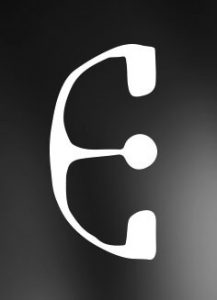
Too stylized enata joined in a row of people holding hands form the motif called ani ata, which translates as “cloudy sky”. Polynesian languages and a row of enata in a semicircular shape often represent the sky and ancestors guarding their descendants.
3. shark teeth (simplified)

shark teeth or niho mano deserve their own space. sharks are one of the favorite ways the aumakua choose to appear to man. they represent protection, guidance and strength, as well as ferocity; however, they are also symbols of adaptability in many cultures. this is an example of simplified shark teeth.
4. shark teeth (complex)
Below are stylized shark teeth, in their most complex form as seen in a tattoo.
5. spearhead
Another classic symbol used to represent the warrior nature is the spear. Spearheads are also very symbolic in relation to sharp objects and can be used to represent the sting of some animals.
6. spearhead (pattern)
This is often stylized as a row of spearheads, a variant is shown below.
7. ocean (simplified)
The ocean is a second home for Polynesians and the place of rest when they leave for their last voyage. Coincidentally, turtles are said to join the deceased in guiding them to their destinations. so sometimes the ocean can be used to represent death and the afterlife. Given that the ocean is the main source of food, it is not surprising that it impacts both lore and myth. all creatures that live in the ocean are associated with various meanings, usually mutated from their characteristic traits and habits. the ocean and the sea can be represented with waves. here is the simplified version.
8. ocean
Ocean stylizations can often represent ideas such as life, change, and continuity through change. waves can also be used to represent the world beyond or the place where the deceased go and rest on their last journey.
9. tiki
one meaning of the word tiki is figure, so tiki is the name given to human-like figures that generally represent demigods instead of atua, which generally appear to men in the form of animals like lizards.
The tiki can also represent ancestors, priests, and deified chiefs who became demigods after their demise. they symbolize protection, fertility and serve as guardians.
stylizing the figure over and over again, a simplified version has been reached, called “bright eye” where the eyes, nostrils and ears seem to be the prominent elements.
here is an example of a tiki face
10. tiki eyes
Tiki figures can be depicted in a frontal view (sometimes with their tongues out as a symbol of defiance of enemies). Here’s a close-up of one of the most important elements of tiki, the eyes.
11. turtle
The turtle or honu is another important creature in all Polynesian cultures and has been associated with various meanings. The first is the fact that turtles symbolize health, fertility, longevity in life, foundation, peace and rest.
The word hono, which means turtle in the Marquesan language, has other meanings that encompass things like uniting and uniting families and representing the idea of unity.
Contrary to what is sometimes believed, turtles drawn upwards do not imply that they are carrying the soul of a dead person to the next world. To represent this, a human figure should be placed on or near the turtle’s shell.
12. turtle (shell pattern)
other patterns can be derived from the shell inlay, this is an example of a shell stylization…
13. lizard
lizards and geckos are often called mo’o or moko and play an important role in Polynesian mythology. gods (atua) and lesser spirits often appeared to men in the form of lizards and this may explain why the stylized element used to represent the lizard is very similar to the stylized symbol used to represent man. Lizards are very powerful creatures that bring good luck, communicate between humans and gods, and can access the invisible world. on the other hand, they can also bring death and bad omens to people who are disrespectful.
14. lizard (pattern)
This is a pattern or stylization of the lizard symbol and, as mentioned above, closely resembles the stylization of the human form (enata).
15. manta ray
Stripe tattoos come in various variations and styles, the image can have symbolic meanings. the ray has the ability to hide in the underwater sands, mainly from sharks and is able to cover itself with sand and stay still. Most sharks can detect prey in the sand based on movement, but for the most part, the ray is able to hide, and for this reason its image is classified as a symbol of protection. other themes that go hand in hand with the image of the stingray are adaptation, grace, tranquility, danger, agility, speed, and stealth.
